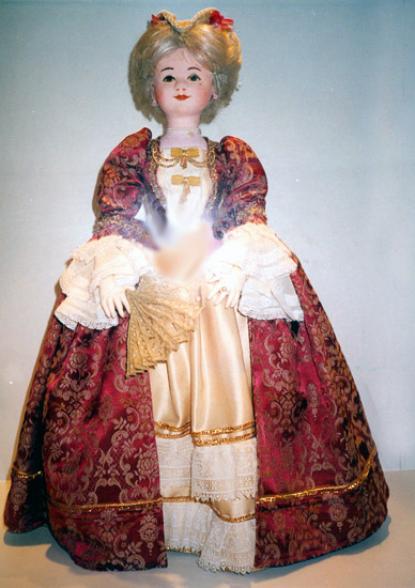2026. January 18. Sunday
Palóc Ethnographical Private Collection and Doll Exhibition - Mátrafüred
|
|
Address: 3232, Mátrafüred Pálosvörösmarti u. 2.
Phone number: (37) 320-137, (37) 320-183
E-mail: info@palocbabak.hu
Opening hours: Permanently
|
Museum tickets, service costs:
|
Ticket for adults
|
300 HUF
|
|
|
Ticket for students
|
250 HUF
|
|
|
Ticket for pensioners
|
250 HUF
|
The material of the museum is shown at two separate exhibitions. In one ward we show protected folk fabric. The original folk cloths is shown on life-size figures. The cloths are from the beginning of the 1900's. We show a young bride, a bride and groom and an old woman.

The clean-room with a laid bed, table, cradle and chest mirrors the lifestyle of peasantry.
The other ward shows everyday articles and objects related to spinning and weaving. The spinning machine is original. If the visitors ask, we show it in operation.
The doll exhibition made up of forty pieces is shown in the other ward. The dolls are 75 cms tall. Thirty of them wear Palóc cloths.
It is typical of the Palóc region that almost all villages own different folk cloths. The dolls chow this difference. There is a young bride, a bride and groom, a mother with her child in a cradle, a woman baking bread, a girl making up bed, young girls chatting in the spinner etc. These all show the lifestyle of the old peasantry.
The other twelve dolls show a very different lifestyle. We wish to show Hungarian historic cloths from the late Middle Ages to the 1900's. These dolls are really part of Hungarian 'fashion history' showing the taste of the nobility and civic society.
There is a royal couple, a gothic woman, a renaissance-, baroque- and rococo couple. The dolls are shown in showcases lit according to their cloths and social rank.
The dolls dressed in folk and historic cloths were all made by myself. I always add one or two pieces to every new exhibition.
The visitors can see an ever renewing showing even in the corridor. The figures wear cloths that are based on folk cloths but can be worn nowadays.
Lovászné Juhász Rita

The clean-room with a laid bed, table, cradle and chest mirrors the lifestyle of peasantry.
The other ward shows everyday articles and objects related to spinning and weaving. The spinning machine is original. If the visitors ask, we show it in operation.
The doll exhibition made up of forty pieces is shown in the other ward. The dolls are 75 cms tall. Thirty of them wear Palóc cloths.
It is typical of the Palóc region that almost all villages own different folk cloths. The dolls chow this difference. There is a young bride, a bride and groom, a mother with her child in a cradle, a woman baking bread, a girl making up bed, young girls chatting in the spinner etc. These all show the lifestyle of the old peasantry.
The other twelve dolls show a very different lifestyle. We wish to show Hungarian historic cloths from the late Middle Ages to the 1900's. These dolls are really part of Hungarian 'fashion history' showing the taste of the nobility and civic society.
There is a royal couple, a gothic woman, a renaissance-, baroque- and rococo couple. The dolls are shown in showcases lit according to their cloths and social rank.
The dolls dressed in folk and historic cloths were all made by myself. I always add one or two pieces to every new exhibition.
The visitors can see an ever renewing showing even in the corridor. The figures wear cloths that are based on folk cloths but can be worn nowadays.
Lovászné Juhász Rita
